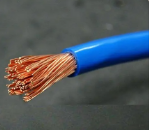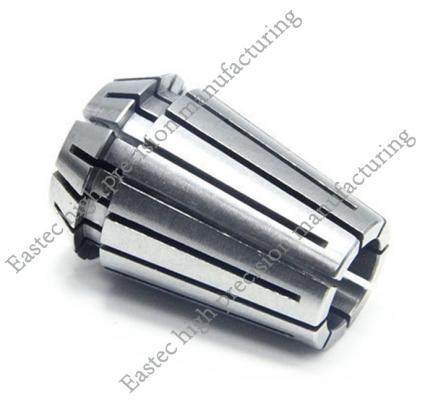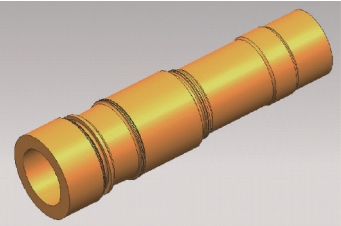The fine boring cylinder machine is a special heavy - duty equipment for processing large - bore cylinder liners of low - speed and high - horsepower diesel engines. Its boring bar has a diameter ranging from 200 to 400 mm and a length from 6 to 12 m. With the improvement of diesel engines, the length of cylinder liners has increased. Conventionally, manufacturing a longer boring bar to meet the processing requirements faces challenges such as long manufacturing cycles, high costs, and high requirements for installation and adjustment accuracy. This paper takes the boring bar of a medium - sized fine boring cylinder machine as the research object, designs an extension device and conducts analysis, providing new ideas for expanding the processing stroke.
Structural Design of the Extension Device for Heavy - Duty Extra - Long Boring Bar
Structure of the Fine Boring Cylinder Machine and Working Conditions Analysis of the Boring Bar
The fine boring cylinder machine consists of main transmission, feeding, clamping, and other components. The original boring bar has a diameter of 300 mm, a length of 7 m, a length - to - diameter ratio of 23.3, and a weight of 3.4 t, belonging to a heavy - duty extra - long boring bar. It has four working conditions: Working condition 1 is for workpiece loading and unloading, tool installation, and measurement, with two - point support; Working condition 2 has the tool at the cylinder liner entrance, with three - point support; Working condition 3 has the tool in the middle of the front and rear supports, with four - point support; Working condition 4 has the tool at the cylinder liner exit, with the same support as in working condition 3 but with a small part of the front end overhanging. The cylinder liner is 2695 mm long, with an inner hole of f500H8, a roundness requirement of ≤ 0.05 mm, and a surface roughness of Ra 1.6 μm. Made of vermicular graphite cast iron, its length exceeds the original processing range of the boring bar, thus an extension device is needed.
Structural Design of the Extension Device
In the extension device, the extended boring bar is positioned with the original boring bar through a stepped hole, and the two shoulder surfaces are pressed tightly. The end key transmits power between the extended boring bar and the original boring bar, tightened with an inner hexagon screw in the keyway of the original boring bar end face. The two are fastened with double - end bolts, thick hexagon nuts, and spring washers. The left end of the extended boring bar is equipped with a positioning spigot and an end - face keyway, which can be connected to the original transmission mechanism or assembled with similar devices for easy extension of the processing length.
Force Analysis of the Extension Device for Heavy - Duty Extra - Long Boring Bar
After assembly, the total length of the boring bar is 7.7 m, the length - to - diameter ratio is 25.67, and the mass is 3.7 t. To ensure strength and accuracy during cylinder liner processing, static and dynamic analyses are carried out on the extension device. Working condition 1, with two - point support, is most affected by gravity and thus undergoes static analysis; working condition 3, with the tool cutting in the middle of the supports, has the maximum deformation and thus undergoes dynamic characteristic analysis. After UG modeling, NX Nastran is used for analysis. Parts are idealized, and non - essential features are removed. The original boring bar is divided into two parts for better meshing. Materials such as QT600 - 3, 45 steel, and 40Cr are selected. During simulation, contacts are set, gravity and bolt pre - tightening forces are applied. The results show that each part has a sufficient safety factor to meet static requirements.
Dynamic Characteristic Analysis of the Extension Device
Real - Eigenvalue Analysis
The real - eigenvalue analysis is the basis of dynamic characteristic analysis, solved by the Lanczos method in NX Nastran. The meshing and contact settings are the same as in the static analysis. A cylindrical coordinate system is established, and relevant degrees of freedom are fixed. As the extension device operates at a low speed, the first four - order modes are extracted for analysis. The results show that the first - order natural frequency is 87.02 Hz. The actual processing speed of 30 r/min is much lower than this, so no resonance will occur. The third - and fourth - order mode frequencies related to the extension device are even higher, and no resonance will occur either.
Direct Frequency Response Analysis
The parameters of the real - eigenvalue analysis are imported into the direct frequency response analysis of NX Nastran SOL 108. Loads are applied at the tool tip, and frequency - sweeping is set. The analysis shows that the frequency displacement in the Z - direction is the largest, followed by the X - direction, and the Y - direction is the smallest. The comprehensive displacement of the tool tip has a small increment in the frequency range of 0.5 - 20 Hz, which is beneficial for increasing the boring bar speed. At the actual processing speed, the comprehensive frequency displacement of the tool tip is 0.0106 mm, meeting the roundness requirement of the cylinder liner processing.
Conclusion
Based on the working conditions of the boring bar of the fine - boring cylinder machine, an extension device is proposed. Analyzed by NX Nastran, the device has a high safety factor under static load, does not resonate during low - speed cutting, and the tool - tip vibration meets the processing requirements. Experiments verify its rationality and reliability, and this method can be extended to the extension design of similar heavy - duty extra - long boring bars.






 Customer service 1
Customer service 1  Customer service 2
Customer service 2